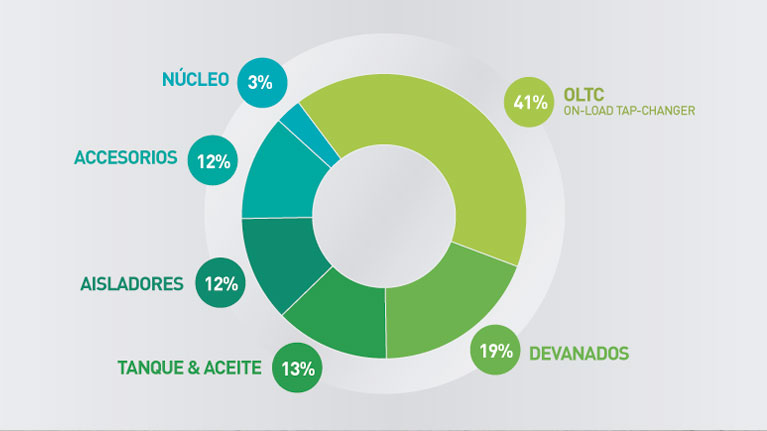Maintenance departments currently seek to strengthen predictive maintenance and inspection activities without stopping the machinery, so that work is only carried out on the equipment if it is necessary. Experience shows that the greatest number of unscheduled outages occur after intervention on the machinery.
With this premise, the maintenance activities planned for the transformers are visual inspection and dielectric oil analysis, due to the low cost and the value they provide.
Visual inspection activities include:
The bushings. Check the oil level and the presence or absence of cracks:
- In the conservator system, check the oil level and condition of the silica gel
- Check the tank for leaks and rust
- In the recirculation system, check the state of the recirculation pumps, housings, plates, etc.
- The indicators that must be monitored include the number of OLTC (On-load tap-changer) operations and the transformer temperature
The two indicators: “temperature” and “number of operations”, are of vital importance for the transformer. The OLTC is the only movable element of the transformer and is the element subject to the largest number of defects (41%).

Table. Statistical data of faults in a transformer’s elements. Source: CIGRE.
Aging or deterioration of the insulation occurs as a result of time, temperature, moisture content and oxygen content.
Modern systems for conserving the oil can minimise moisture and oxygen from contributing to the deterioration of the insulation, leaving temperature insulation as a control parameter. According to the IEC [5] and IEEE [6] guides, the relative rate of aging on a transformer doubles for every 6ºC increase.






